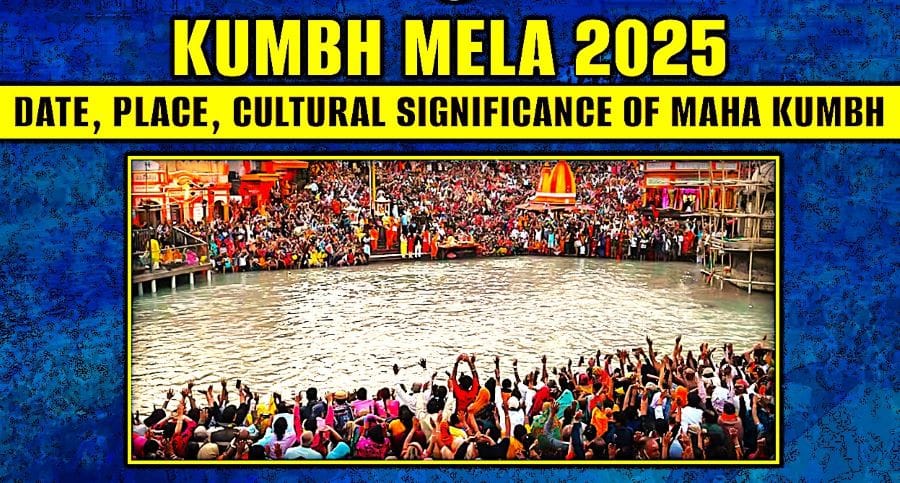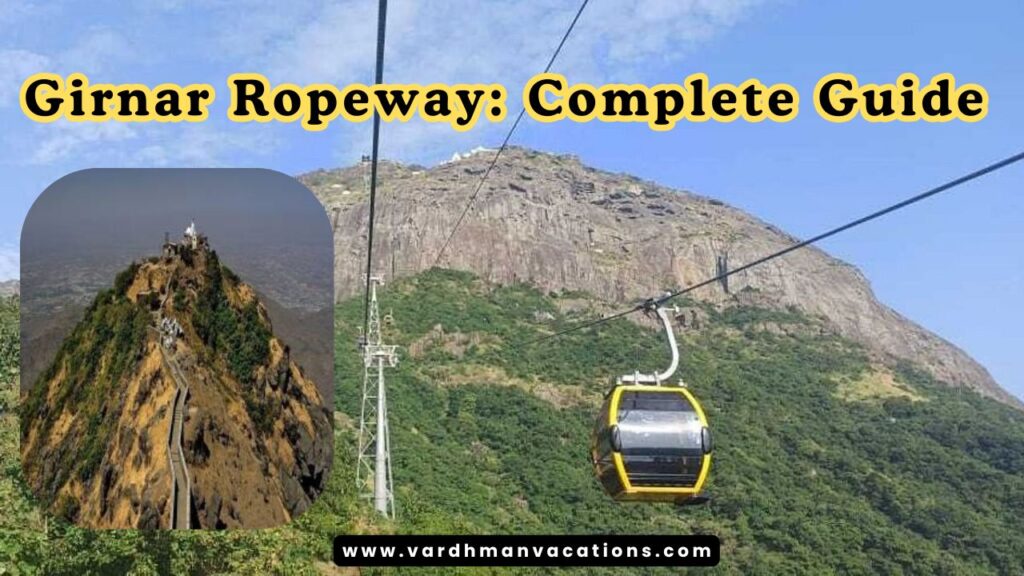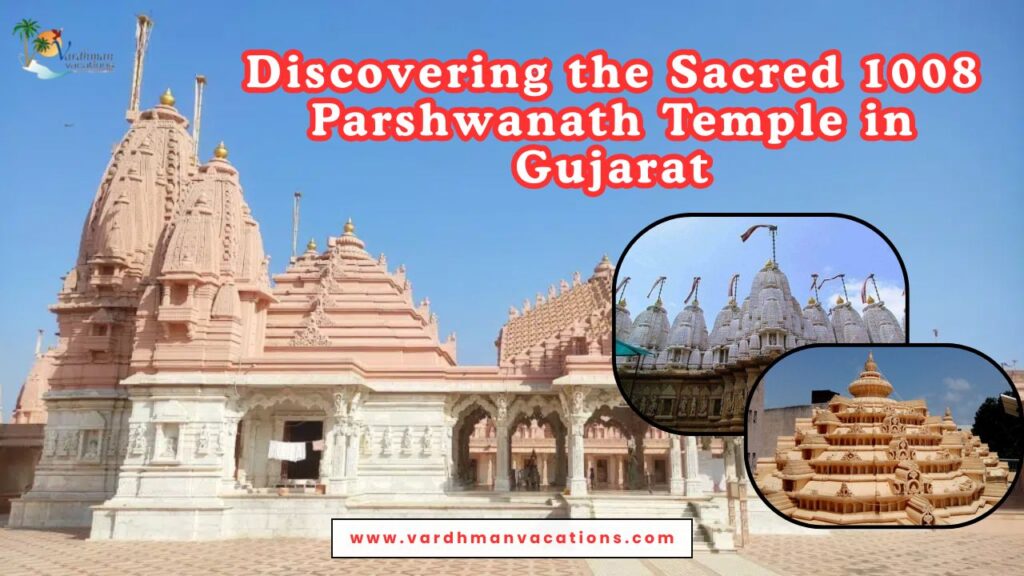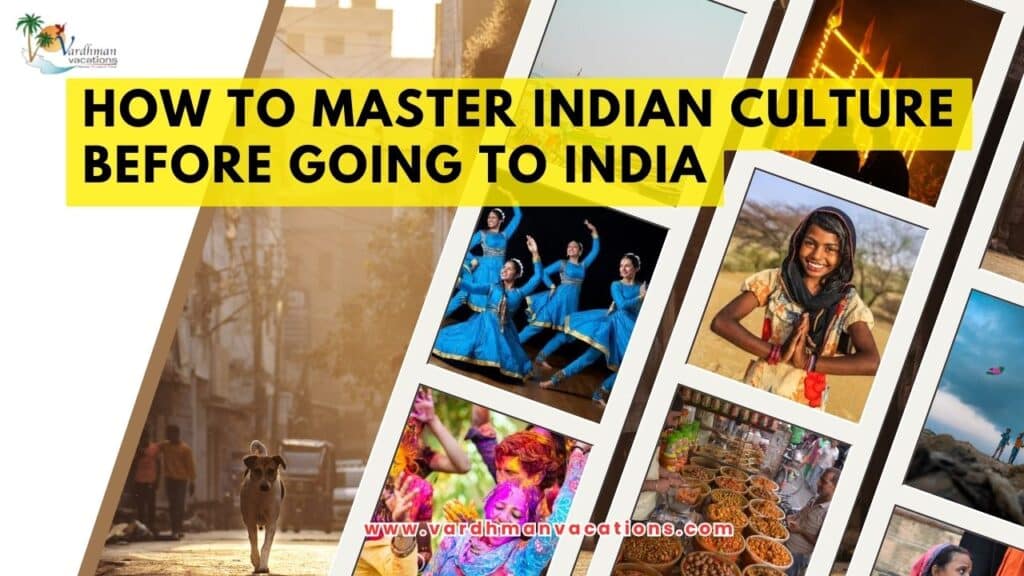Kumbh Mela is one of the largest religious events known to humankind so it is said that Mass participation gathering happens at the Ghats of sacred rivers of India. The next Maha Kumbh Mela 2025 festival will take place in Prayagraj (formerly Allahabad)–the city that stirs millions of spiritual associations in people. This religious carnival is auspicious for Hindus and prospective pilgrims, saints, sadhus, and tourists around the globe.
What is Kumbh Mela?
Kumbh Mela is a Hindu festival held in a cycle of 12 years at four sacred locations: Prayagraj, Haridwar, Nashik, and Ujjain. It is celebrated in these cities in cycles associated with the stars. Among all Kumbh Melas, Maha Kumbh Mela’ which takes place every 144 years in Prayagraj, proves to be the largest and most important.
The customs which are associated with the festival have their descendants and antecedents in mythology. In Hindu mythology, there is a story that gods and demons performed one legendary event to obtain the elixir of life, which is situated in the ocean bottom – Samudra Manthan. In this process, there was war and during that time they spilled a drop of this nectar in four places and those are Prayagraj, Haridwar, Nashik, and Ujjain. Today these places are the location of the Kumbh Mela during which the believers believe the rivers transmute into the water of life.
Importance of Maha Kumbh Mela 2025
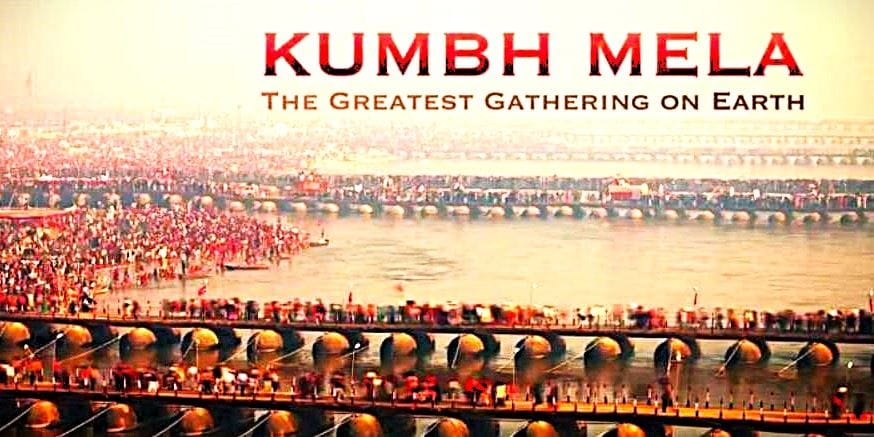
Maha Kumbh Mela 2025 will be important in many ways for a number of reasons. First, it occurs at a very sensitive period, coinciding with positions in the zodiac of the conjunction of Jupiter with the Sun and the Moon. According to Hindu mythology, rivers Ganga, Yamuna, and the holy river of knowledge – the Saraswati turn into a divine receptacle, which cleanses one’s soul in case one bathes during this time.
To millions of devotees, it is considered that taking a dip in the Sangam, which is referred to the confluence of these three rivers at Prayagraj, can purify all sins and help in getting moksha (attaining freedom from the birth and death cycle). The act of pilgrimage to the Maha Kumbh is considered one of the supreme sacred duties and is independent from other sin offerings.
Spiritual Practices of Maha Kumbh Mela 2025
There are some spiritual practices of Maha Kumbh Mela 2025. These are:
- Shahi Snan (Royal Bath): One of the greatest traditions of the Maha Kumbh is the Shahi Snan. This is a colorful parade in which highly respected holy saints, Muni, Fakirs and other holy men including Naga Babas (FA showmen who do not wear any cloth and whose bodies are smeared with ashes) take a dip in the holy rivers. Shahi Snan is the most Brahma Muhurta when people perform the ritualistic bathing which is stated to give salvation. In 2025 the Shahi Snan will be performed on fixed dates millions go to the bank of the rivers in the morning.
- Puja and Yagna: Different religious functions like puja and yagna, that is fire worship, are performed all along the Mela. These rituals are meant to cleanse the person, eliminate negative forces and to attract divine favor.
- Darshan and Satsang: People come together to listen to discourses (Satsang) from renowned enlightened beings or saints, gurus, or religious preachers. These sessions provide religious discourses, divine knowledge, and counsel. The Maha Kumbh is a fair that provides a channel for communication between the ‘gurus’ and the devotees from all over the world.
- Feeding of the Poor (Annadan): The last area tapping religious aspects of the Maha Kumbh Mela is charity, which is expected to occur in the next chapter. Annadan (serving food to the deprived) is another common practice many of them and several organizations take up where they are blessed and receive positive karma.
Religious Significance and Search for Moksha
For the Hindus, Maha Kumbh Mela is a chance to leave the earthly plane and link with the higher power. People cover thousands of kilometers, and suffer from heat or cold, in order to engage in the holy bath and the rituals. So, the whole festival is based on the belief of moksha, which is freedom from birth and death. In the Hindu worldview, life means repetition, suffering, and death, embraced in the term samsara. The general climax is to free one from this cycle and attain oneness with the supreme god.
Taking a dip in the holy water during Kumbh is widely thought-destroyer and trinket and liberates the soul of its sin and sets it free to attain salvation. For many, the pilgrimage is also a way for each to attend church, pray closer, and devote himself or herself to the religious practice.
The Sadhus: Mystical Saints of the Kumbh
The Maha Kumbh Mela is especially interesting because of the participants which are sadhus, Hindu monks who have left their worldly life behind and serve a purity and spiritual quest. These holy men are from different tiers including naga sadhus who do not wear any clothes, the Urdhwavahurs, who are known to perform iron duplication postures as well as the Parivrajakas, who do not reside in one place at all.
Naga sadhus are saintly naked monastic men with ash-smeared bodies, long unkempt hair, and one of the most striking fascinating glimpses of the fervent faith of devotees of Lord Shiva. During the Shahi Snan, they are the first to jump into the holy waters, which signifies unconditional victory against the state of worldly living. The Maha Kumbh Mela is a happy occasion for the sadhus since they assemble after a long time – perhaps years – spending most of their time in meditation.
Impact of Maha Kumbh Mela 2025 on World
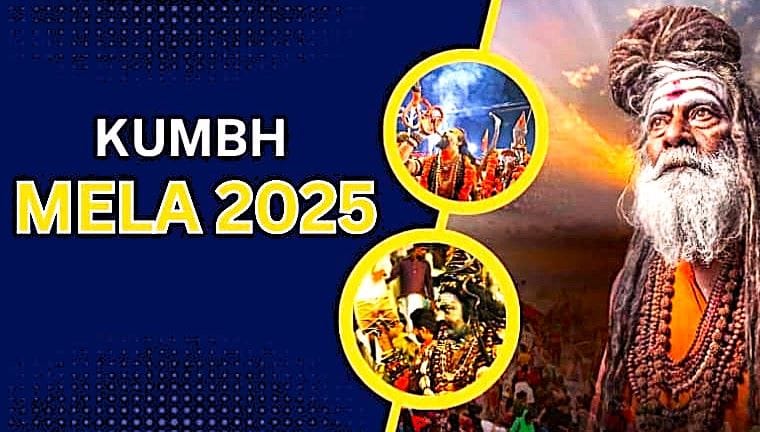
Today the Maha Kumbh Mela has gone beyond the Vedic culture and has attracted international attention. In the year 2012, India’s Ministry of Culture recognized the Kumbh Mela as a national festival; in the same year, UNESCO included the phenomenon in the List of Intangible Cultural Heritage of Humanity. The attendance of a large number of people, and ethnically diverse crowd, and the historical background of the assembly make it a memorable experience for all travelers across the world.
It is a biennial social event where people expect to see some aspects of Indian life and culture, particularly spirituality. It also emphasizes unification and creating the rally of peace and search for purpose with the background, which is a world that is divided by everything that has to do with materialism.
Slogan of Kumbh Mela 2025
Chalo Kumbh Chalo-Chalo Kumbh Chalo (Let’s go Kumbh – come on Kumbh)
Maha Kumbh Mela 2025 Dates
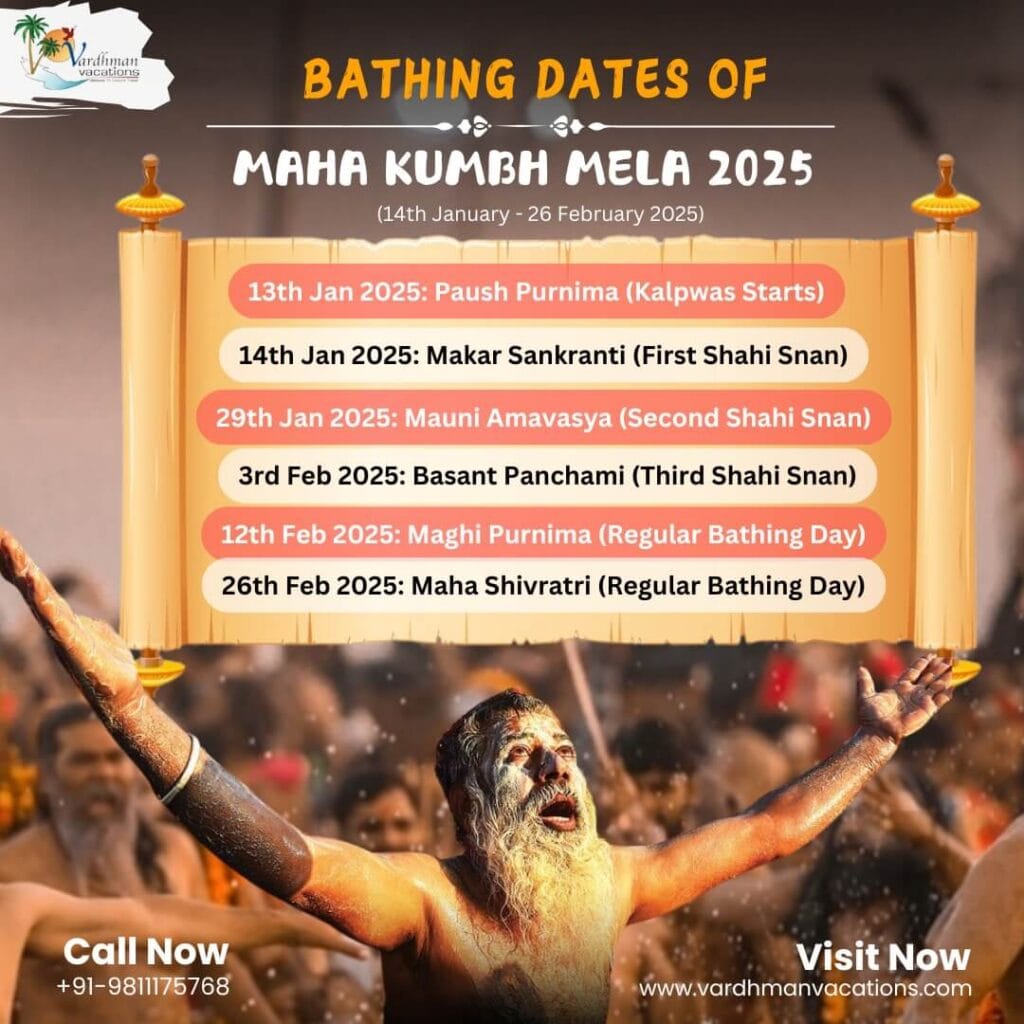
Next year Kumbh Mela is going to be held at Prayagraj at Triveni Sangam, commencing from the 14th of January, 2025, the day of Makar Sankranti till the 26th of February, 2025 the day of Maha Shivratri.
| Date | Day | Occasions / Bathing Event |
| 13th January 2025 | Monday | Paush Purnima (Kalpwas Starts) |
| 14th January 2025 | Tuesday | Makar Sankranti (First Shahi Snan) |
| 29th January 2025 | Wednesday | Mauni Amavasya (Second Shahi Snan) |
| 3rd February 2025 | Monday | Basant Panchami (Third Shahi Snan) |
| 12th February 2025 | Wednesday | Maghi Purnima (Regular Bathing Day) |
| 26th February 2025 | Wednesday | Maha Shivratri (Regular Bathing Day) |
Maha Kumbh Mela 2025 Logo
Chief Minister Yogi Adityanath recently released the Maha Kumbh 2025 logo. It includes Amrit Kalash, a temple, a figure of Lord Hanuman, a rishi or seer, an urn, and the Akshayvat tree representing the conjunction of the Sanatana civilization with the twofold nature and humanity. The design is focused on the spiritual aspect paying tribute to Prayagraj, and epitomising the Kumbh Mela.
Maha Kumbh Mela 2025 App
In addition, there is also the Maha Kumbh Mela 2025 app to help boost the experience of devotees attending this great festival. Using the Mahakumbh2025.app which can be downloaded from the App Store or Google Play Store for free, users can gather general information on the event and schedules, real-time infotainment, maps of the place, and transportation details. It can be downloaded by just searching Maha Kumbh Mela in the store.
Managing Maha Kumbh Mela 2025
Organizing Maha Kumbh Mela 2025 is challenging because much work has to be done for preparation. The city infrastructure includes transportation and roads, water supply and sanitation, medical provision as well as houses that can accommodate millions of pilgrims. There is security with drones, CCTV, and on-ground people guarding the national and international people who visit the place. Some of them include pollution of rivers, which is controlled by proper means of waste disposal and water management. the use of technology emerges as another input where technology is used to avail real-time updates of the rituals, facilities, and emergency services required for efficient management of the crowds.
Conclusion
The Maha Kumbh Mela 2025 is going to be a great spiritual event for human beings around the world. When millions come to Prayagraj, devotees can perform pilgrimage to have divine blessings and visitors can explore the spiritualism of India. It has been noted not only as a religious occasion but as a measure of togetherness, doctrine, and spirituality and therefore a festival to remember for anyone who happens to make it to the spectacles.

